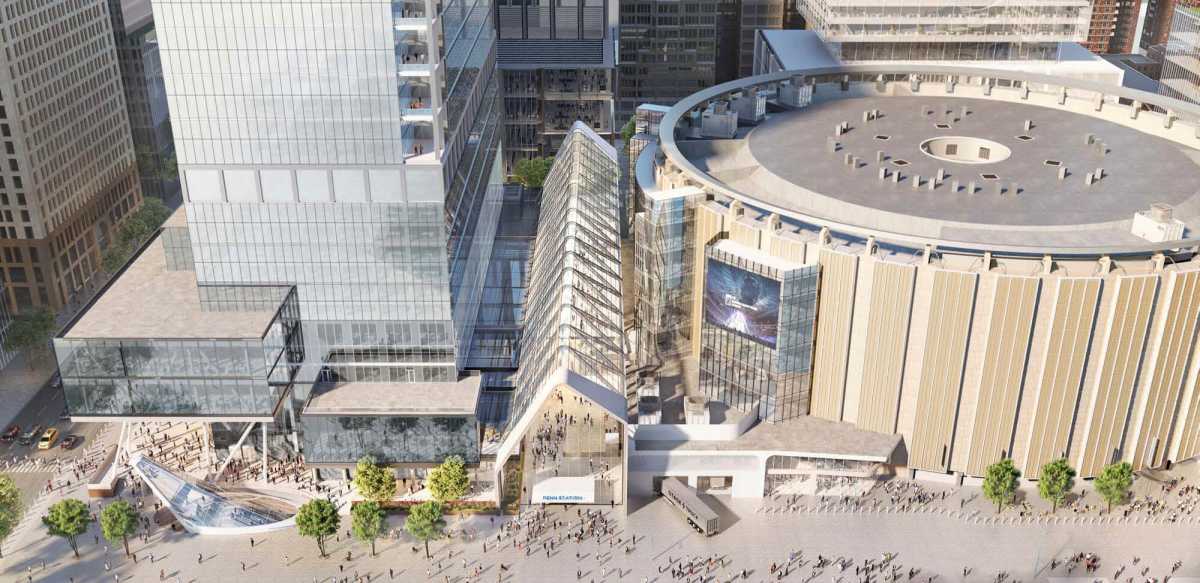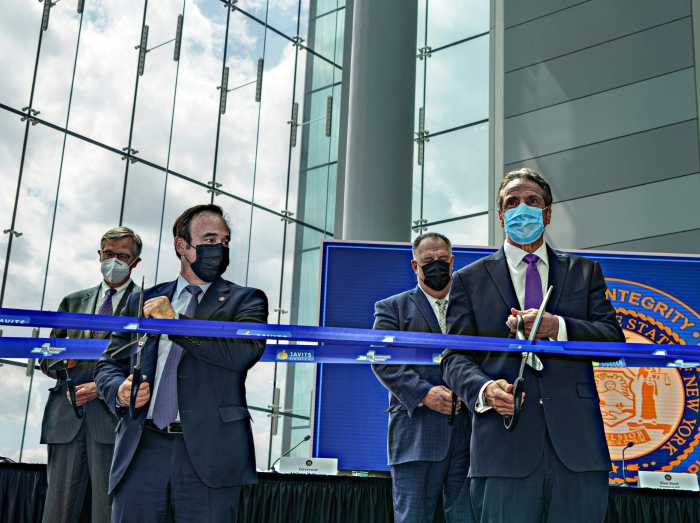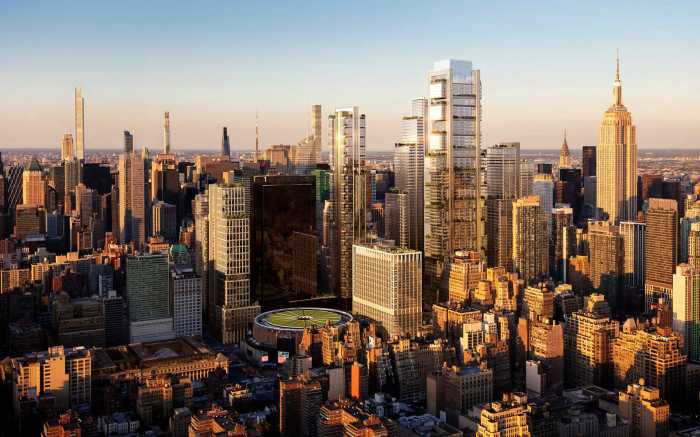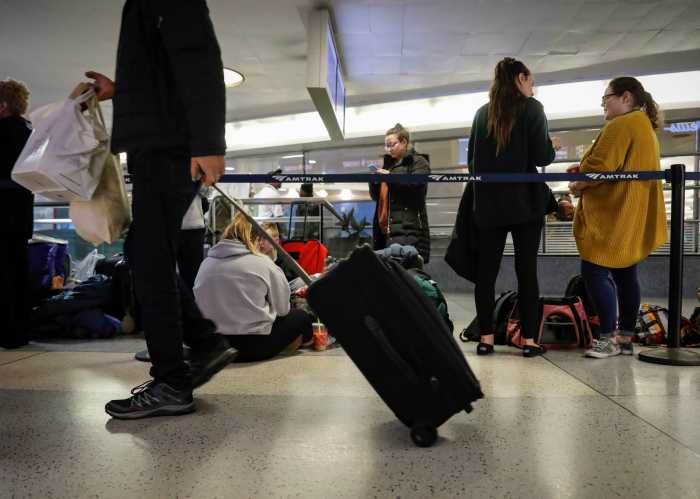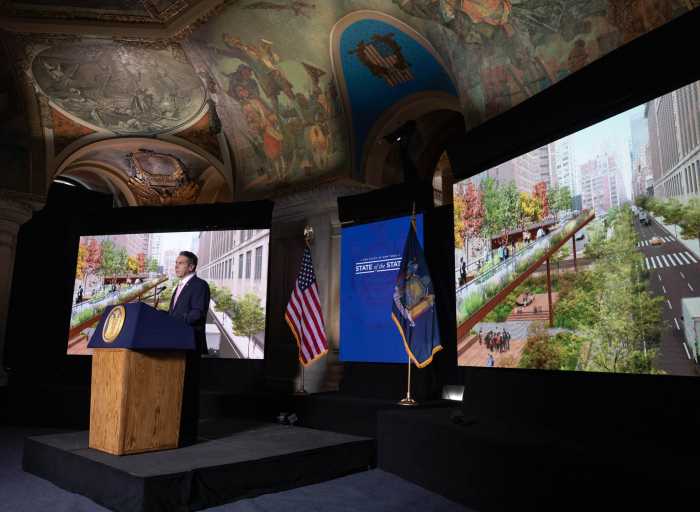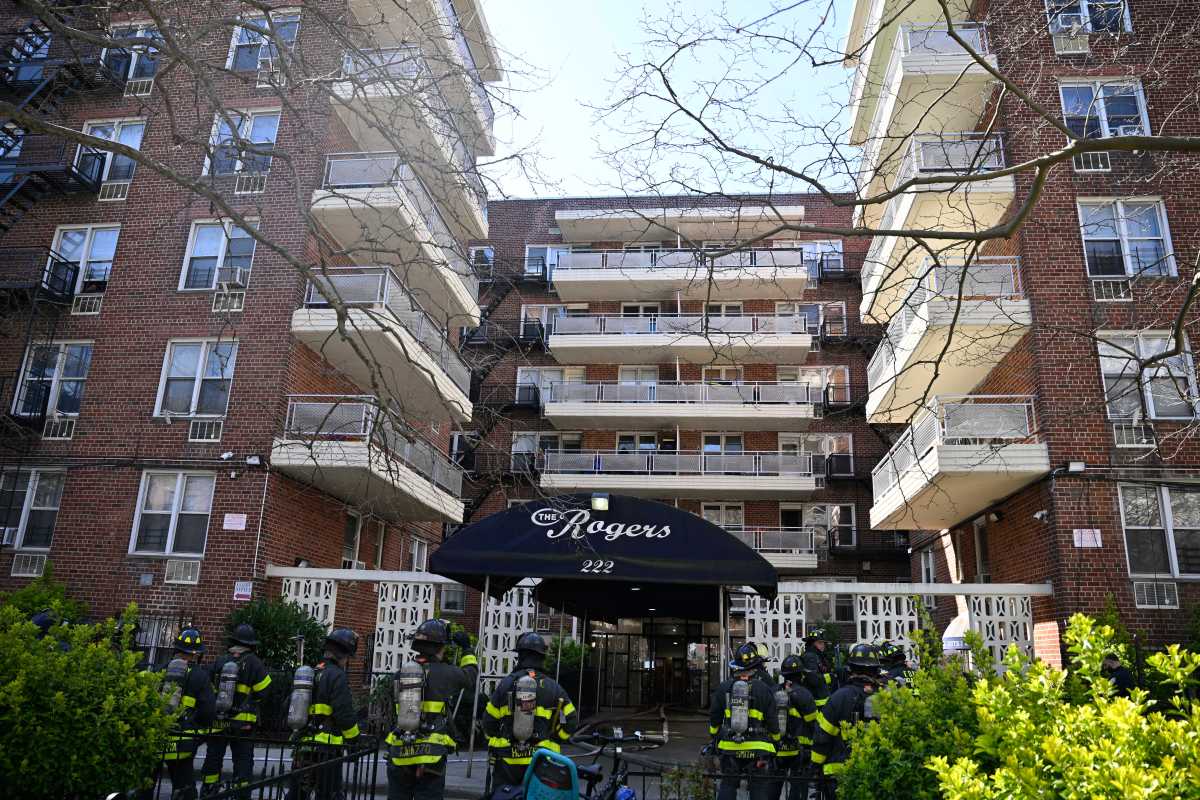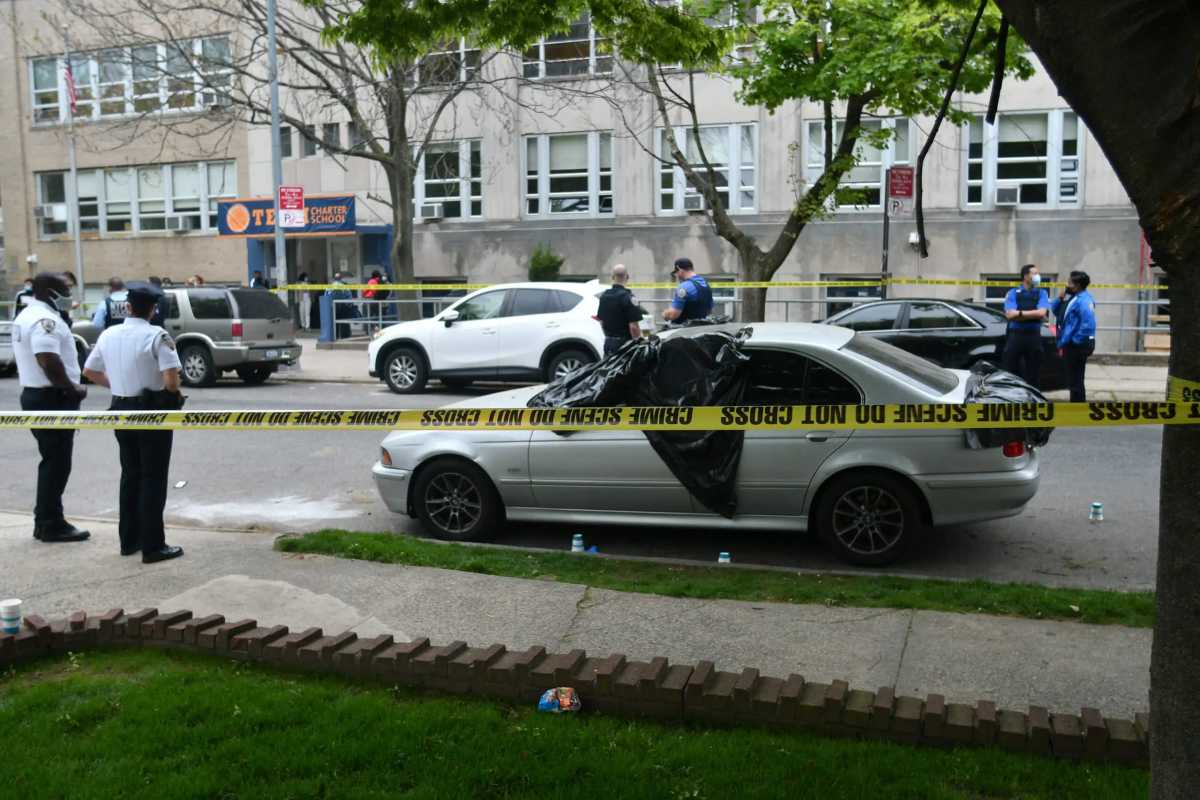Governor Kathy Hochul’s Penn Station renovation proposal could give developers up to $1.2 billion in tax breaks, but may rake in only half the funds needed to pay for the transit hub’s upgrades, according to an analysis.
The governor’s controversial scheme to collect future payments from developers of a new 10-tower predominantly office complex would still leave the state more than $3 billion short of funding the planned overhauls at Penn Station, a study released Wednesday by the good government group Reinvent Albany estimates.
Empire State Development, the state authority in charge of the Penn project, has yet to publish key details, like how much revenue officials expect from the development or how high their tax breaks will be.
ESD is set to vote on the proposal — officially dubbed the General Project Plan, or GPP — at its next monthly meeting on July 21, and watchdog groups and lawmakers have slammed Hochul for not being fully transparent about the large-scale project.
“The state hasn’t shown that financing a train station’s upgrades by building 10 towers and giving a developer $1.2 billion tax break makes sense,” said Rachael Fauss, a senior research analyst at Reinvent Albany.
The report was written by public finance experts Bridget Fisher and Flávia Leite with the Schwartz Center for Economic Policy Analysis at The New School, who previously co-authored a study on the cost of the city’s Hudson Yards redevelopment project in 2018.
State officials want to use so-called payments in lieu of taxes, or PILOTs, to fund the Penn Station revamp, using so-called “value capture” of future proceeds from property owners to pay back bonds, a method also employed by the city at Hudson Yards.
The state plans to give discounts to developers on the PILOTs similar to Hudson Yards, which could be up to 20%, according to the report.

The researchers estimated that the scheme will bring in $6.6 billion in revenue for ESD, but the state would lose $1.2 billion of those funds to the tax breaks and another $1.3 billion in refunding lost city tax revenues, leaving $4.1 billion.
New York’s share for projects to improve Penn Station could total between $7.5-$10 billion, which includes the station’s renovation, track expansion, and the federal Gateway project to rehabilitate and add tunnels underneath the Hudson River.
The real estate proceeds would cover no more than around 55% of those costs.
Influential developer Vornado Realty Trust owns or leases the largest share of the development site, and the company’s CEO Steven Roth donated the maximum allowed $69,700 to Hochul’s election campaign in December, according to state records.
Government officials and reps for the developer have pitched the PILOT proposal as harvesting private dollars and saving money for the state.
But the complex funding mechanism carries risks and taxpayers may be on the hook to cough up more cash, as was the case with Hudson Yards, noted one of the report’s authors.
“The main risks related to land value capture is the unpredictability of the future,” said Leite in an interview.
“Assuming that all development happens on time, on schedule, there are no recessions, there are no cost overruns, there are no revenue shortfalls, then a project will be self-financing,” the researcher added. “Otherwise, if anything falls outside this closed loop it can potentially call for taxpayer support.”
Fauss also questioned the need for discounts when the state will already make developers’ land more valuable by allowing them to build bigger.
“Do you even need to incentivize development with a tax break in one of the most valuable parts of Manhattan,” Fauss said.

An ESD spokesperson defended the project and accused Reinvent Albany of trying to derail the redevelopment of a “long-neglected area,” into a more than 18.3 million square-foot complex of predominantly offices and a roughly 9% portion of residential units.
“The state is enhancing the city’s tax base by unlocking the real value of the long-neglected area, which will improve the lives of millions of New York commuters,” said Matthew Gorton in a statement. “It’s disappointing that an organization that considers itself a citizens’ watchdog would prefer Penn Station remain a junkyard, denying New Yorkers the significant affordable housing, open space and desperately needed transit improvements this plan provides.”
Vornado, through an unnamed spokesperson, provided the following statement.
“Vornado is a key partner in this neighborhood and committed to a GPP that’s transformative for the region and reflects the vision outlined by Governor Hochul and Mayor Adams. Vornado has a strong record working on successful public-private partnerships that opened Moynihan Train Hall, completed a new station entrance at 33rd Street, and will deliver a new LIRR concourse.”
Hochul’s office did not immediately respond to a request for comment.



